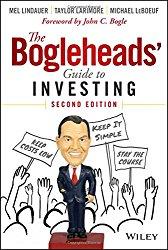Most people invest for the wrong reason. Some invest as a game, putting some money in, picking a stock or two, and hoping to sell at the right time to get a good profit. For them investing is a form of entertainment. Others only invest for retirement, making a 401k and investing synonymous. At least this second group is doing something useful with their investments, but investing can be so much more. I guess some could invest for the perks. Investors in Landry’s Restaurants get a gift certificate to use each year at the restaurants.
But investing can be so much more. Investing can help provide security throughout your life. It can help you pay for big expenses like new roofs or the next new car. It can help you fund your children’s’ educations. It can pay for your vacations each year so that you can have your cake and eat it too.
Investing done right isn’t done for a specific purpose (although specific purposes help guide you on how much you need to invest). It is like exercising. Perhaps you train for a certain race or event from time-to-time, but most of the time you get up at the crack of dawn and strap on your jogging shoes just because you know that getting a run in before work will make you feel better all day. Investing is done the same way, little-by-little, on a regular basis. Not for a specific goal, but because each time that you invest your life gets a little bit better. You are a little more financially secure than you were before.
Before we go too much further, let me highly recommend that you pick up a copy of The Bogleheads’ Guide to Investing. This book will go into a lot of the details behind how mutual funds work and why you should buy certain types funds (index funds). It also gives great advice on things like life insurance. If you buy a copy by clicking on the book cover below and going through Amazon, it won’t cost you anything more than it would if you bought it elsewhere, but I’ll get a couple of dollars from Amazon. If I get enough of these commissions, it keeps me wanting to write more great articles like this one instead of going fishing, so it is really in your best interest too if you like good free web content. Just saying.

When you first start investing you buy a few shares of stock or a few shares of a mutual fund. As you keep buying, year-after-year, you gradually build up a small portfolio. Keep going and you’ll find yourself with a large portfolio – one big enough to pay for everything you need. At that point, you are no longer depending on a job for income because your portfolio will generate all of the income needed to pay for things. You will have reached financial independence.
Getting started
The first thing to do to get started is to start saving up money for investing. This is money outside of your retirement plan. You need to be able to access the portfolio you will develop and take money out periodically to pay for things. Your goal should be about $3000-$5000. This is enough money to purchase various securities without paying a large percentage of your investment in fees and brokerage commissions. To reach this goal, identify ways to increase your free cash flow – the amount of money you have left over each month after you have paid your bills and put money away for retirement. If you can generate $300 per month in free cash flow, you can start investing in about ten months. You’ll be there in about six months if you can generate $500 per month.
Once you have amassed a sufficient sum, it is time to establish an investment account and start investing. I would recommend going with either Vanguard or Charles Schwab since both companies offer a wide variety of low-cost mutual funds and also allow direct stock purchases if you desire. Setting up an account is simply a matter of filling out some information online and then funding the account by sending in a check or doing a transfer. If you have trouble, there are normally lots of nice people there to help via phone or chat.
Your first investment
A simple first investment is to purchase shares in a mutual fund. Here you’ll want a low-cost fund that invests in a broad sector of the market. Good choices would be an S&P 500 Index Fund or simply a Total Market Index Fund. Once you’ve made the first investment, just keep adding more money and buying more shares as you can. Do this regardless of what the price of the fund is doing. Just know that ten or twenty years in the future, the price will be substantially higher regardless of what the price is now. While there is normally a minimum initial investment in a mutual fund, once you’ve established the investment, you can send in small amounts of money after that.
Your second investment
Once your portfolio reaches about $10,000, it is time to choose a second investment. Here you’ll want to choose something that invests in a different part of the market from your first fund. For example, if you started out investing in an S&P 500 index Fund, which invests in large US stocks, you might then want to invest in a Small Cap Index Fund, which would invest in small US stocks. Sometimes large stocks will do well, other times small stocks will do well. By spreading your money out, you’ll always have some money in whatever is doing well at the time.
Again, you’ll need to save up enough money to meet the minimum initial investment. You could also choose to sell some shares of your original fund and put the money into the next fund. Realize that is the fund has gone up since the time when you started buying, you’ll have a capital gain that you’ll need to report and pay taxes on. This isn’t that big a deal, but does add to your tax burden.
Using your portfolio
Think of your portfolio as a basil or a parsley plant. When it is small, if you started cutting off some of the leaves to use in your cooking, it would have trouble growing and probably die. If you waited a while until it was sufficiently big, perhaps helping its growth by adding some fertilizer – new contributions – from time-to-time, you could start to take some cuttings without significantly damaging the plant. Eventually, it would get to the point where you could take all that you needed and the plant would continue to get bigger.
This is the same thing that happens with your portfolio. If you started to take money out when you first had your $3000 investment, your investment would never go anywhere. Once it gets to $20,000, however, you will be able to take out a little money each year without hurting the growth much. Once it reaches $100,000 or $500,000, you can start to make some fairly sizeable withdrawals. Once it reaches a million dollars or two million, it can provide enough income to replace your job.
The trick is to take no more than the portfolio can stand to lose, while also understanding that the more you leave behind, the faster it will grow. A good rule-of-thumb is that you can harvest about 4% per year without doing serious damage. Your portfolio should be able to repair itself at this level of withdrawals. This means that a $20,000 portfolio could provide about $800 per year. This might be enough for a weekend trip or two-thirds of the cable bill. A million dollar portfolio could provide about $40,000 per year. Realize, however, that this is near the maximum that you can withdraw and that withdrawing at these levels will keep your portfolio from growing. If you want to have the portfolio continue to grow, you’ll need to limit your withdrawals to less than this. So maybe at $20,000 you take out a couple thousand dollars from your portfolio to pay for a big bill, but then you leave it alone for the next several years to allow it to recover and grow further.
Still need more help? I literally wrote the book on how you can use investing to grow your wealth and reach financial independence, the SmallIvy Book of Investing: Book 1: Investing to Become Wealthy

Have a burning investing question you’d like answered? Please send to [email protected] or leave in a comment.
Follow on Twitter to get news about new articles. @SmallIvy_SI
Disclaimer: This blog is not meant to give financial planning or tax advice. It gives general information on investment strategy, picking stocks, and generally managing money to build wealth. It is not a solicitation to buy or sell stocks or any security. Financial planning advice should be sought from a certified financial planner, which the author is not. Tax advice should be sought from a CPA. All investments involve risk and the reader as urged to consider risks carefully and seek the advice of experts if needed before investing.
